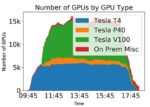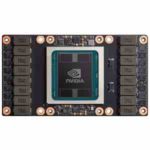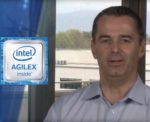In this special guest feature from Scientific Computing World, Laurence Horrocks-Barlow from OCF predicts that containerization, cloud, and GPU-based workloads are all going to dominate the HPC environment in 2020. “Over the last year, we’ve seen a strong shift towards the use of cloud in HPC, particularly in the case of storage. Many research institutions are working towards a ‘cloud first’ policy, looking for cost savings in using the cloud rather than expanding their data centres with overheads, such as cooling, data and cluster management and certification requirements.”
Second GPU Cloudburst Experiment Paves the Way for Large-scale Cloud Computing
Researchers at SDSC and the Wisconsin IceCube Particle Astrophysics Center have successfully completed a second computational experiment using thousands of GPUs across Amazon Web Services, Microsoft Azure, and the Google Cloud Platform. “We drew several key conclusions from this second demonstration,” said SDSC’s Sfiligoi. “We showed that the cloudburst run can actually be sustained during an entire workday instead of just one or two hours, and have moreover measured the cost of using only the two most cost-effective cloud instances for each cloud provider.”
Big Compute 20 Conference Announces Speaker Lineup
Today the Big Compute Conference announced sponsors and speakers for its inaugural event, held February 11-12, 2020 in San Francisco. The two-day conference will feature business leaders and scientists describing how they are transforming their industries with access to unlimited cloud compute. “Big Compute 20 brings together thought leaders in aerospace, automotive, AI, biotech, medical, academic, technology, and chemical industries. In addition to inspiring talks, the event will feature workshops, networking, panels and a hackathon sprint, all focused on the freedom to think big.”
AMD Readies EPYC for Exascale with ROCm at SC19
In this video from SC19, Derek Bouius from AMD describes how the company’s new EPYC processors and Radeon GPUs can speed HPC and Ai applications. With its EPYC processors, Radeon Instinct accelerators, Infinity Fabric technologies, and ROCm open software, AMD is building an Exascale ecosystem for heterogeneous compute. “Community support for the pre-exascale software ecosystem continues to grow. This ecosystem is built on ROCm, the foundational open source components for GPU compute provided by AMD.”
NVIDIA Announces GPU-Accelerated Supercomputer on Azure
At SC19, NVIDIA announced the availability of a new kind of GPU-accelerated supercomputer in the cloud on Microsoft Azure. “Built to handle the most demanding AI and high performance computing applications, the largest deployments of Azure’s new NDv2 instance rank among the world’s fastest supercomputers, offering up to 800 NVIDIA V100 Tensor Core GPUs interconnected on a single Mellanox InfiniBand backend network.”
HPC in the Cloud Offers Flexible, Scalable Solutions for Enterprises and Research Institutions
In this guest article, our friends at Intel discuss how HPC as a Service (HPCaaS) reduces barriers to HPC and offers a cost-effective extension to on-premise solutions. High performance data analytics (HPDA), simulation and modeling, and artificial intelligence (AI) enable significant benefits like quicker business insights, the ability to design and bring products to market faster, or real-time monitoring of financial transactions for fraud.
Computational Evaluation of Cloud HPC with a Global Atmospheric Model
Daniel Arevalo from DeVine Consulting gave this talk at the HPC User Forum. “Prompted by DoD priorities for modernization, cost savings, and redundancy, this project compared the performance of the NAVGEM on an in-house Cray system against the follow cloud offerings: AWS c4.8xlarge, Penguin B30 queue, Azure H16r, and AWS c5n.18xlarge.”
Intel Ships First 10nm Agilex FPGAs with Integrated Arm Processors
Today Intel announced that it has begun shipments of the first Intel Agilex field programmable gate arrays (FPGAs) to early access program customers. In what may be a surprise to many, the F-Series variant of the chip family also provides the option to integrate a quad-core Arm Cortex-A53 processor to provide high system integration. “Intel FPGAs have provided Microsoft tremendous value for accelerating real-time AI, networking, and other applications/infrastructure across Azure Cloud Services, Bing, and other data center services.”
ANSYS Cloud HPC Increases Simulation throughput for Hundreds of Organizations
Engineers are unlocking increased compute capacity to achieve advancements in 5G, autonomous systems, electric vehicles, and other global megatrends thanks to ANSYS Cloud HPC, powered by Microsoft Azure. Available from directly within ANSYS engineering simulation software, ANSYS Cloud is helping organizations rapidly run high-fidelity simulations, shortening development cycles and increasing time to market. “”Organizations benefit from Azure’s vast number of on-demand compute cores to run large parallel and tightly coupled simulations, enabled by infrastructure specifically designed for HPC featuring RDMA InfiniBand. With Azure, ANSYS customers get performance without sacrificing security as sensitive proprietary data remains highly secure and protected by technologies that prohibit unauthorized access.”













